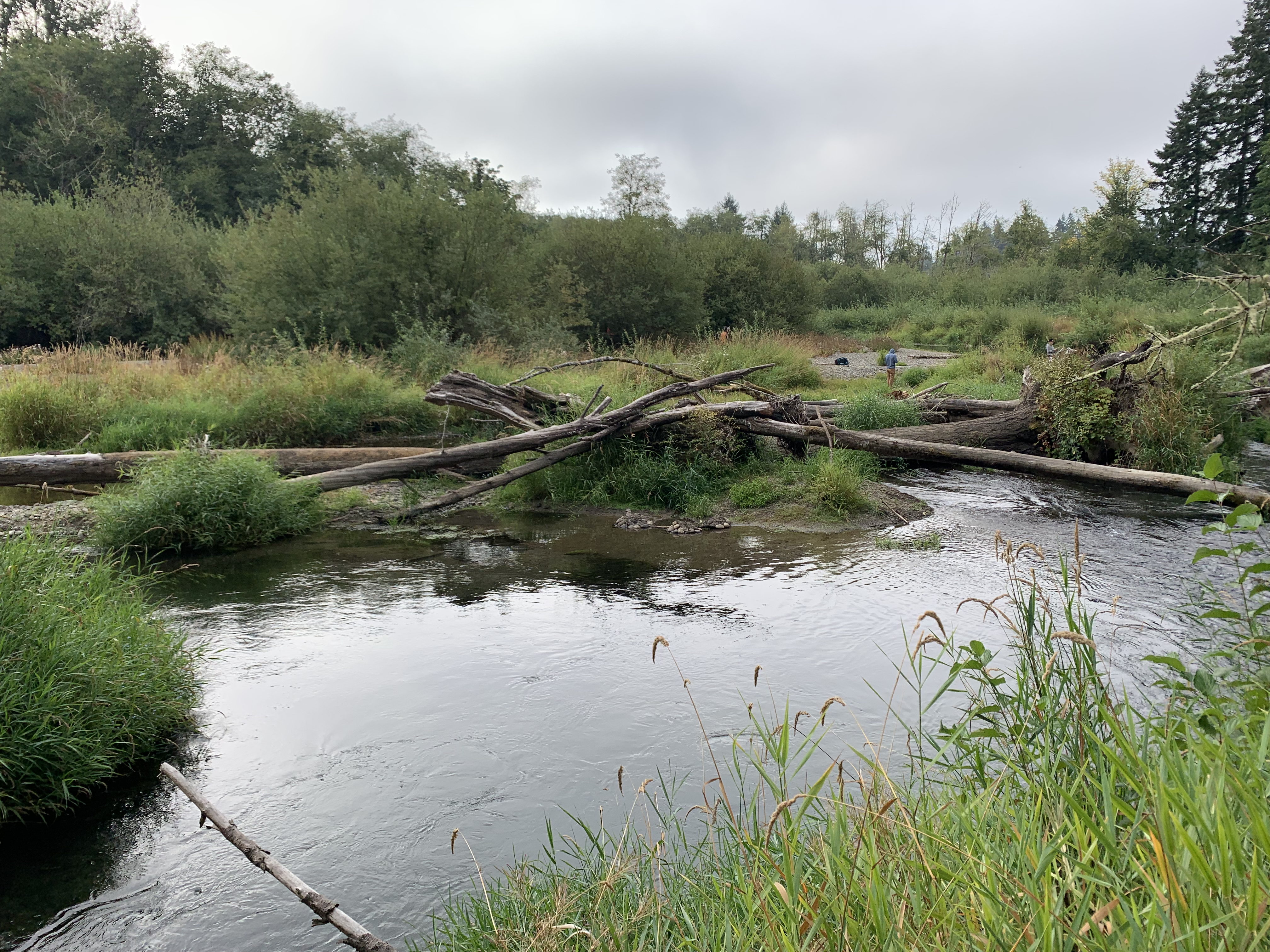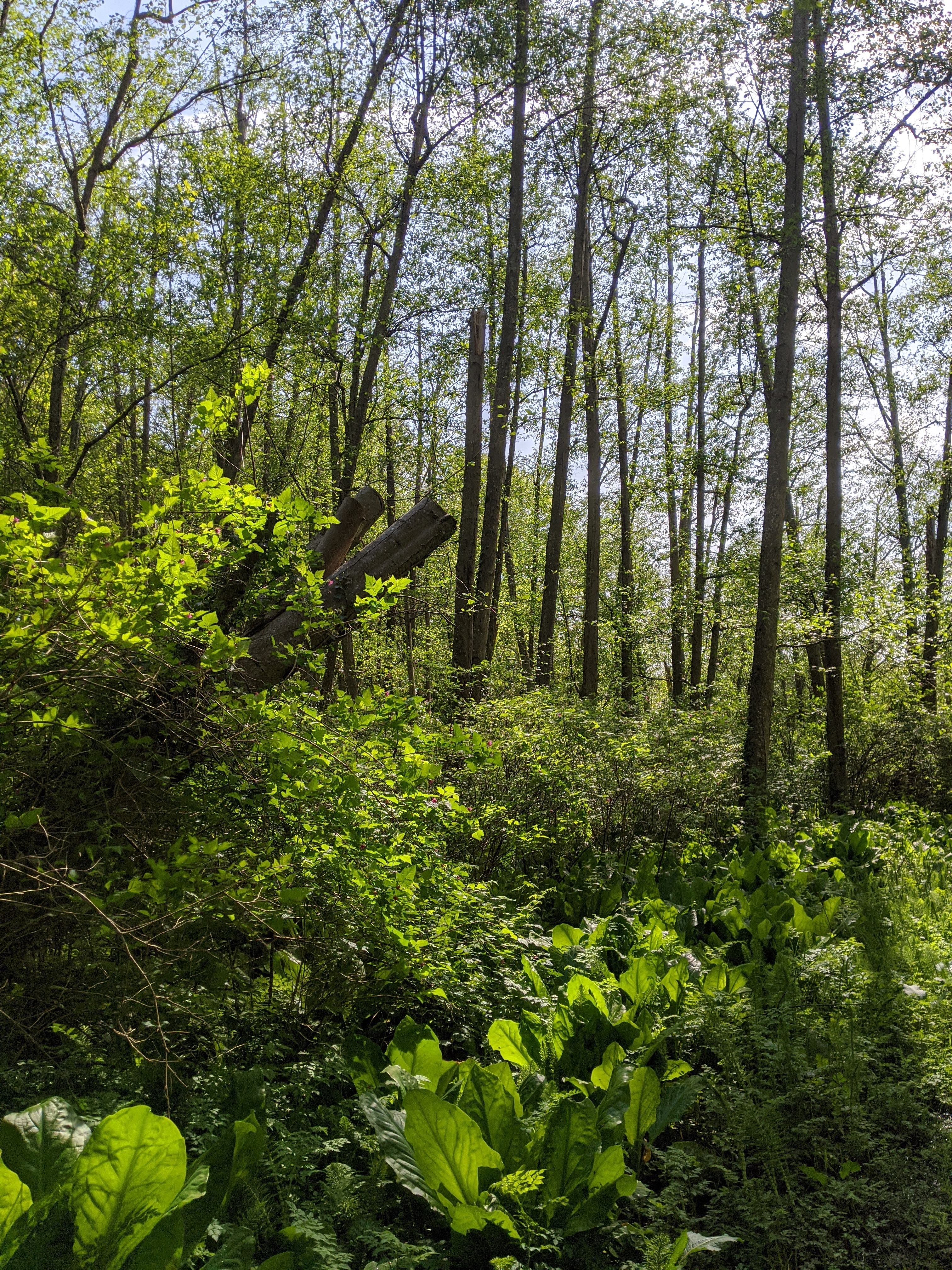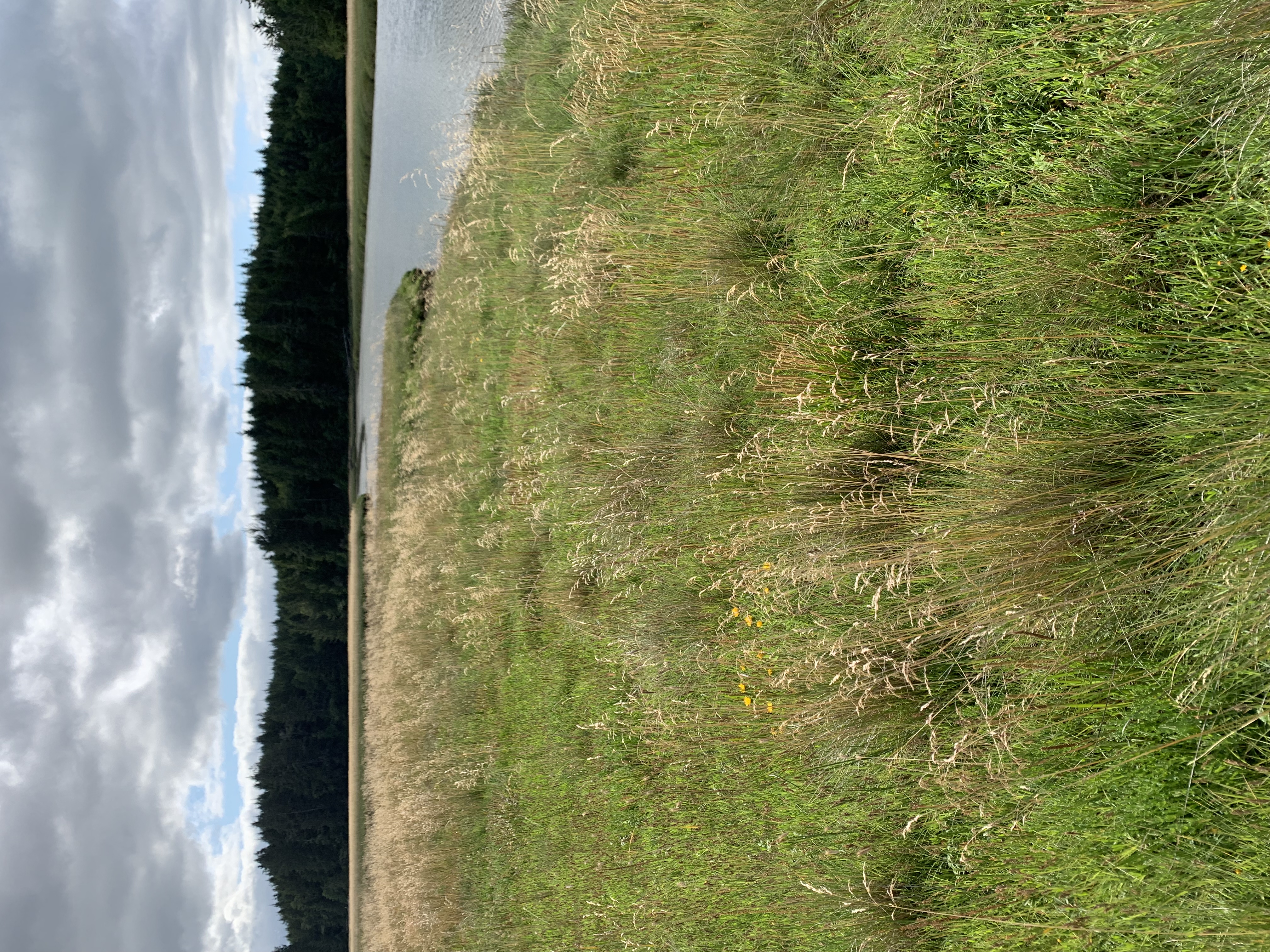We continue to celebrate American Wetlands Month. Did you know Washington is home to nearly one million acres of wetlands? Wetlands come in all different shapes and sizes and are found in a variety of landscape settings. These landscapes influence important wetland characteristics. Let’s look at a few different types of wetlands you can find in Washington.
Riverine wetlands
Riverine wetlands are frequently flooded by rivers and streams. They are often swamps, with woody plants like trees and shrubs, that help slow down and store floodwaters. They also filter sediment, nutrients, and other pollutants out of the water as it flows through them.
Woody plants in riverine wetlands shade the water, and the leaves help feed critters all the way up the food chain. In addition, riverine wetlands provide important rearing and refuge habitat for salmon species, western toads, and many other important Washington fish and wildlife species.
Slope wetlands
Slope wetlands, also called seeps, occur where groundwater intersects the ground surface. These wetlands occur in forests, farm fields, alpine meadows, and many other landscapes.
They are important habitats for critters like salamanders that live in forests and other species who use these wetlands as refuge in our hot, dry summer months.
Slope wetlands are often the headwaters to streams, rivers, lakes, and other wetlands, and they help to maintain sufficient base flows and waters in those systems.
Depressional wetlands
Depressional wetlands include small ponds, potholes, oxbows, camas meadows, beaver ponds, bogs, and interdunal wetlands located near the Pacific Ocean coast. These types of wetlands provide habitat for wildlife and rare plants. We estimate 80% of animals in Washington use depressional wetlands at some point in their lives.
Even very small depressional wetlands can be important for maintaining water quality while storing floodwaters and supporting biodiversity. Without these types of wetlands, it would be much more expensive to manage the environmental quality of our waters and prevent flood-related damage.
Estuarine wetlands
Estuarine wetlands are shaped by tides and marine waters, which determine the types of plants and animals that can survive in them. Salmon live in estuarine wetlands while they get used to changes in water chemistry as they move up into freshwater rivers to spawn, and as young fish migrate back out to the sea.
All of Puget Sound is an estuary, and essentially every river flowing into the Sound has its own estuarine wetland at its mouth where salmon hang out before leaving for saltier waters.
Lake fringe wetlands
Lake-fringe wetlands occur along the shorelines of large lakes with open water. These wetlands can have vegetation from trees and shrubs to emergent herbaceous plants like cattails and bulrushes on the shoreline down to the aquatic bed in the lake. The vegetation in lake fringe wetlands helps clean the water in a lake—in fact the microbes on the vegetation do most of the work!
Lake fringe wetland plants also help prevent shoreline erosion. Like all other wetlands, lake fringe wetlands provide important habitat for many different species.
Learn more
There are so many wetlands in our state and it is easy to learn more about them and find one near you. For example, King County has a new Story Map that describes different wetland types and where you can visit wetlands in the area. You can also use your favorite search engine to "Find a wetland trail near me."
Next week, we’ll share information about some common wetland plants in Washington.





